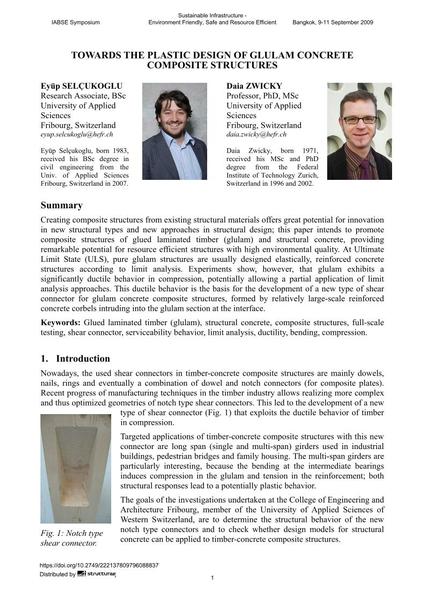Towards the Plastic Design of Glulam Concrete Composite Structures

|
|
|||||||||||
Bibliografische Angaben
| Autor(en): |
Eyüp Selçukoglu
Daia Zwicky |
||||
|---|---|---|---|---|---|
| Medium: | Tagungsbeitrag | ||||
| Sprache(n): | Englisch | ||||
| Tagung: | IABSE Symposium: Sustainable Infrastructure - Environment Friendly, Safe and Resource Efficient, Bangkok, Thailand, 9-11 September 2009 | ||||
| Veröffentlicht in: | IABSE Symposium Bangkok 2009 | ||||
|
|||||
| Seite(n): | 20-29 | ||||
| Anzahl der Seiten (im PDF): | 8 | ||||
| Jahr: | 2009 | ||||
| DOI: | 10.2749/222137809796088837 | ||||
| Abstrakt: |
Creating composite structures from existing structural materials offers great potential for innovation in new structural types and new approaches in structural design; this paper intends to promote composite structures of glued laminated timber (glulam) and structural concrete, providing remarkable potential for resource efficient structures with high environmental quality. At Ultimate Limit State (ULS), pure glulam structures are usually designed elastically, reinforced concrete structures according to limit analysis. Experiments show, however, that glulam exhibits a significantly ductile behavior in compression, potentially allowing a partial application of limit analysis approaches. This ductile behavior is the basis for the development of a new type of shear connector for glulam concrete composite structures, formed by relatively large-scale reinforced concrete corbels intruding into the glulam section at the interface. |
||||
| Stichwörter: |
Duktilität Verbundkonstruktionen Biegung Druck
|
||||
